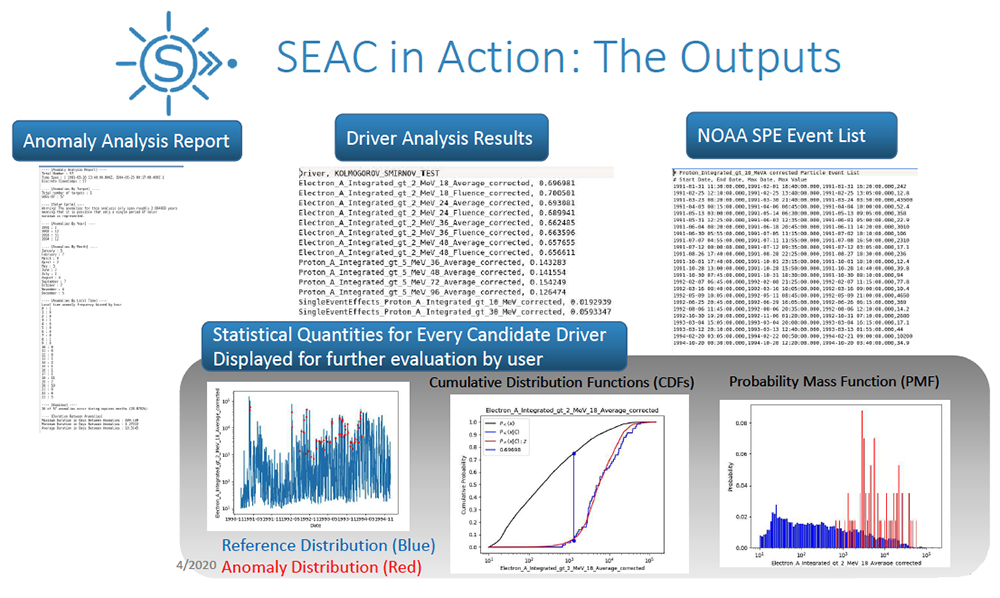project: SEAC
Space Environment to Anomaly Correlator.
SEAC overview
The Space Environment to Anomaly Correlator (SEAC) is an SBIR Phase I and Phase II collaboration with AFRL/RV to automate the correlation of incidents of off-nominal spacecraft performance with energetic charged particle (ECP) drivers to improve space environment anomaly attribution.
New Air Force policy requires ECP sensors on all future spacecraft to enable differentiation of the underlying cause of onboard anomalies. This change makes it desirable to improve on the current industry standard and capabilities that rely heavily on analysis based on a generic space environment hazard to all vehicles. SEAC utilizes these local ECP measurements producing a more detailed characterization of susceptibilities tailored to an individual spacecraft or constellation, helping determine more accurately whether on-board anomalies are likely induced by hostile activity, the natural environment, or something else entirely.
Correctly identifying susceptibilities for specific space vehicles is currently a very labor-intensive and manual process. Using the ECP data directly without a deep understanding of the limitations of the space particle sensors or the likely occurrence of anomalies associated with environmental drivers can lead to incorrect attribution. SEAC automates much of this manual process and using knowledge of the space environment interactions with satellites, increases the space industry’s accessibility of vehicle-specific tailored anomaly assessments.

